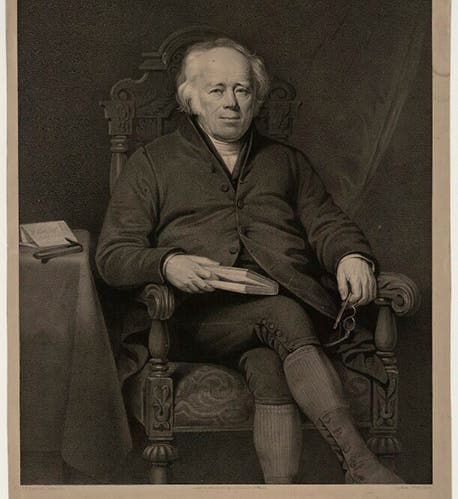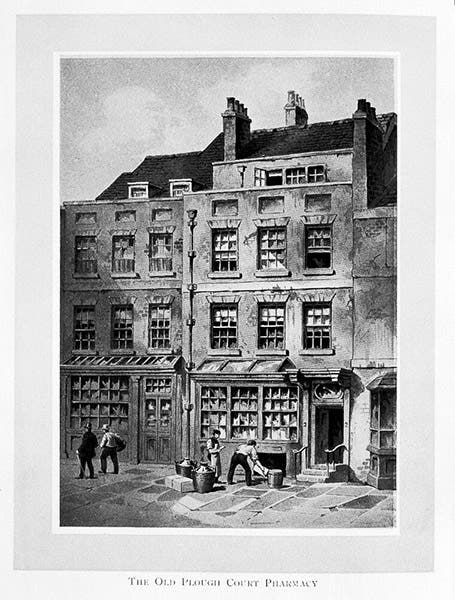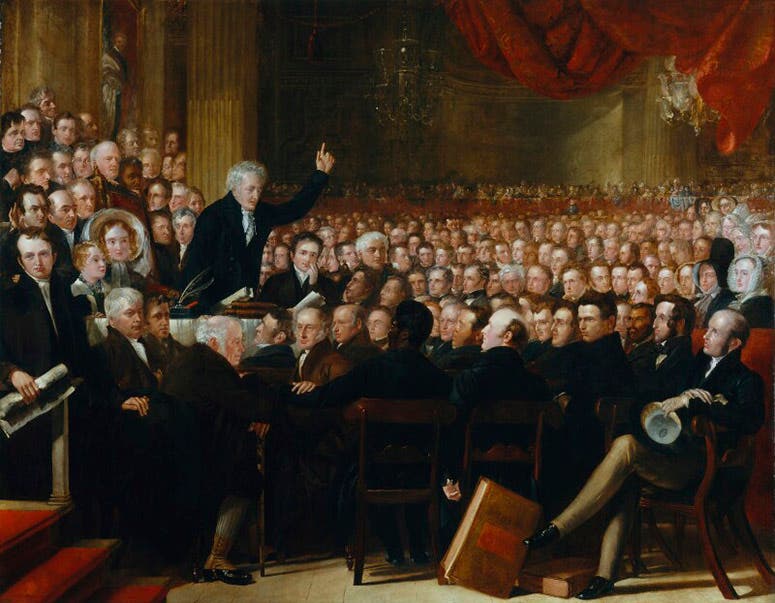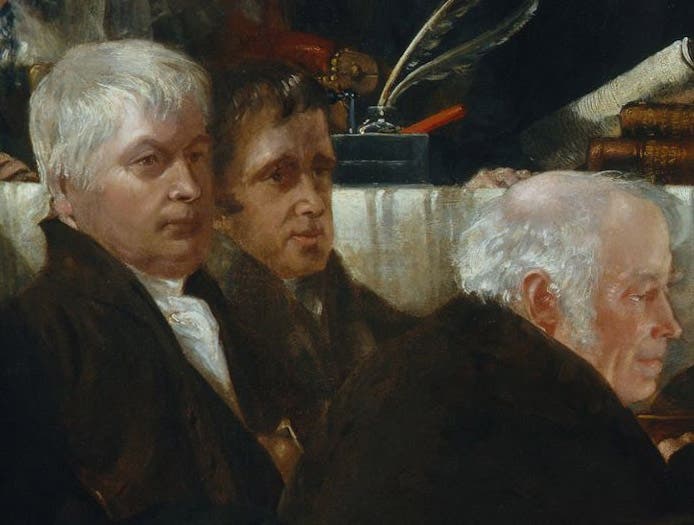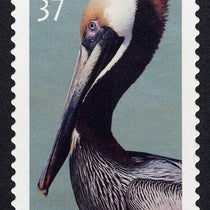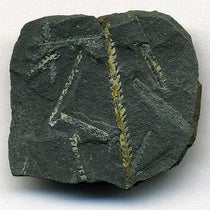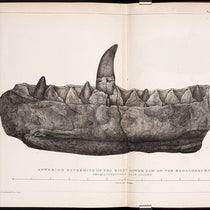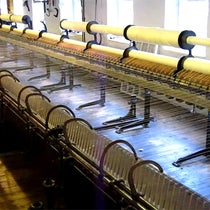Scientist of the Day - William Allen
William Allen, an English chemist and Quaker, died Sep. 30, 1843, at the age of 73. Allen came from a well-to-do manufacturing family, so he was free to follow his interests, which happened to be science, especially chemistry. He joined a chemistry group at Guy's Hospital in London, got to know chemists such as Humphry Davy, and was invited to lecture at the Royal Institution. Allen established a pharmaceutical firm which did business at Plough Court in London and eventually became one of the country's largest manufacturers and suppliers (second image). He founded his own scientific society, the Askesian Society, in 1796, which met at Plough Court until 1807, when it dissolved, its place taken by the Geological Society of London, founded that same year.
It was at one of the meetings of the Askesian Society in 1802 that Luke Howard, by then Allen's partner in his pharmaceutical firm, gave a paper on cloud formation that is a milestone in the history of meteorology, because Howard there coined the terms cumulus, nimbus, stratus, and their hybrid forms, such as cirro-stratus. Much, much later (1841), Allen would found the Pharmaceutical Society, later the Royal Pharmaceutical Society, and preside over the fledgling group as its first president. So Allen deserves to be recognized as an important member of the English chemical community in the first decades of the 19th century, and he was properly included in the engraving, Men of Science Living in 1807-8, by William Walker, 1862, that we have mentioned at least a dozen times in these posts. We show a detail of the section with most of the chemists (third image); Allen is right in the middle at the back, just above a sleeping Henry Cavendish and looking right at the viewer. William Henry is to the right of Allen, then William Hyde Wollaston, Charles Hatchett, and a petite Humphry Davy, just above a seated John Dalton. Luke Howard was not included, for whatever reason. You can see the entire engraving, in the National Portrait Gallery, London, at this link.

Detail of Men of Science Living in 1807-8, showing a number of chemists; William Allen is at top center, looking straight out at the viewer, directly above the sleeping Henry Cavendish; a petite Humphry Davy is four to the right of Allen, just above a seated John Dalton; engraving by William Walker, 1862, National Portrait Gallery, London (npg.ork.uk)
But as good as Allen was as a chemist, he was an even finer man as a Quaker. Several Quakers played important roles in 18th-century science, although primarily as patrons: Peter Collinson, for example, supported the work of Mark Catesby and Benjamin Franklin, and John Fothergill was the patron of Sydney Parkinson and John Bartram (both Quaker themselves). But the Quakers were more prominent as social activists, and Allen was right at the forefront of all the Quaker causes in England.
He was a proponent for educational opportunities for young women and founded the Newington School for Girls in 1824 in Stoke Newington in north London. He himself taught the sciences at the school. He was a vocal advocate for penal reform, and made several trips to France to inspect the prisons there. He worked to improve nutrition for the lower classes, setting up plots in Stoke Newington to improve the availability of fresh food in his community. He opposed war in all its forms and was on a several committees to promote peaceful solutions to national problems.
But his most passionate cause was abolition. Like nearly all Quakers, he was appalled by slavery. He gave his first speech against slavery in England in 1792, and was soon on the committee of the Society for the Abolition of the Slave Trade, which managed to get slavery abolished in England in 1807. Nine of the 12 committee member were Quakers. The next step was to abolish slavery in the colonies, which was achieved by the passage of a law in Parliament in 1833. When some colonies, especially Jamaica, abused the law by turning its enslaved persons into apprentices, which was a transformation in name only, Allen took up the cause for the revocation of the apprenticeship clause, and was successful. And in 1840, Allen helped organize the first international conference for the abolition of slavery and the slave trade. Called the World Anti-Slavery Convention, it met in London in June of 1840. There were many hundreds of delegates, and a painting was made the next year by Benjamin Haydon, commemorating the event (fourth image). The organizers, including Allen, are in the front row at the left. Allen is directly in front of the speaker; a detail shows him more clearly (fifth image).
Allen died three years later. He was buried in the Hackney Quaker Burial Ground in Stoke Newington, Greater London. If he has a memorial stone, I could not locate a photograph.
William B. Ashworth, Jr., Consultant for the History of Science, Linda Hall Library and Associate Professor emeritus, Department of History, University of Missouri-Kansas City. Comments or corrections are welcome; please direct to ashworthw@umkc.edu.

